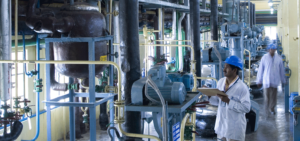 There have been some tremendous gains made in the pharma industry’s understanding of Active Pharmaceutical Ingredient (API) design, and it’s reflected in the APIs currently in development around the globe. It also presents something of a dichotomy: as API production grows more complex, the industry is increasingly demanding shorter, simpler and more consistent manufacturing techniques. Here are five trends in API design, scale-up and manufacture that are seeing increased industry attention.
There have been some tremendous gains made in the pharma industry’s understanding of Active Pharmaceutical Ingredient (API) design, and it’s reflected in the APIs currently in development around the globe. It also presents something of a dichotomy: as API production grows more complex, the industry is increasingly demanding shorter, simpler and more consistent manufacturing techniques. Here are five trends in API design, scale-up and manufacture that are seeing increased industry attention.
1. Quality By Design (QbD)
QbD will drive a more holistic approach to drug discovery, development & manufacture Historically, pharma “controlled” quality. The FDA’s implementation of Quality by Design (QbD) over the last few years has shifted focus away from controlling quality after the fact to “designing” quality into the product from the earliest stages. QbD is a holistic approach, and is achieved by developing a thorough understanding of a drug, its ingredients and the processes that produce them. It calls for understanding the manufacturing, contamination or other risks upfront, and developing effective strategies to mitigate the risks at every stage. [Read more about QbD in the FDA’s report: Pharmaceutical Quality for the 21st Century: A Risk-Based Approach]
2. Compliance and Cost, Working Together
Recognition of – and demand for – streamlined processes will be driven by both cost & compliance People often see compliance and cost as contrasting forces. Companies attempt to maximize the former while minimizing the latter. It’s a “see-saw” approach to balancing what many consider two opposing aspects of pharma. Techniques such as scouting alternate synthetic routes to a molecule, however, can be driven by a two-fold need: both cost control and simplified regulatory compliance. From a cost standpoint, the math is simple: fewer production steps almost always equates to less expensive, faster production. Done right, it can also simplify some of the compliance steps in drug production (e.g., there may be fewer steps to document, or less analytical work to perform across the various API production steps). In such a case, the development of straightforward, scalable and robust processes aligns these two objectives.
3. Capacity Utilization
Companies will continue to evaluate the need for latent API production capacity Capacity is always an important issue, and API production capacity utilization tends to suffer lower utilization rates than other segments of the industry (excipient production or finished dosage manufacturing, for example). Companies will continue to evaluate the need for excess latent capacity, and seek suppliers as an alternative to maintaining inefficient capacity. This isn’t a new trend by any stretch – but it has been growing over the last ten years as companies consolidate production sites, streamline internally and refocus on core competencies.
4. Process Analytical Technology (PAT) Implementation
PAT reflects the FDA’s shift in focus from batch to continuous production. A new quality framework put forth by the FDA, PAT is expected to improve quality and reduce waste & cost amongst pharma CROs, CMOs and manufacturers. Similar to Quality by Design, PAT focuses on understanding every aspect of the product’s manufacture, though attention focuses specifically on machinery and equipment. Critical Process Parameters (CPPs) are developed for the equipment and are monitored to ensure the process doesn’t go ‘out-of-spec.’
5. Environmental Considerations
Concerns over green chemistry and waste minimization have gone global. We love sharing good corporate stewardship stories, but opting to use certain green practices (zero liquid discharge, for example) can also be driven by local, regional or national waste compliance regulations. With companies worldwide seeking to meet the highest common denominator of global expectations, the management and handling of effluent, waste and byproducts has become a key issue for API producers and their customers. What API manufacturing trends are you seeing? Is there anything you’d add to this list?










